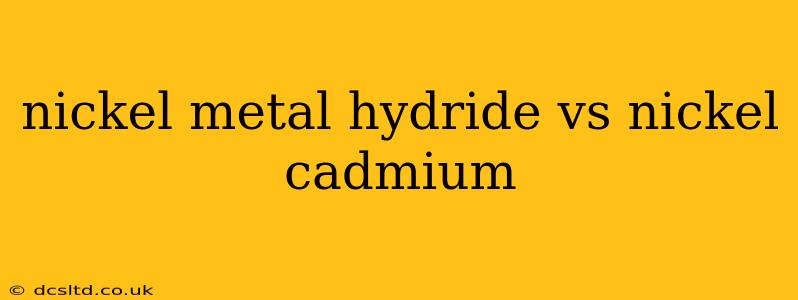Choosing the right rechargeable battery can be tricky, especially when faced with options like Nickel Metal Hydride (NiMH) and Nickel Cadmium (NiCd). Both have been popular choices for various applications, but significant differences exist in their performance, environmental impact, and overall cost-effectiveness. This comprehensive comparison will help you understand the key distinctions and determine which battery type best suits your needs.
What are Nickel Metal Hydride (NiMH) Batteries?
NiMH batteries are a significant improvement over their NiCd predecessors. They utilize a nickel oxide hydroxide cathode and a hydrogen-absorbing alloy anode. This design allows for higher energy density, meaning they can store more energy in the same physical size compared to NiCd batteries. They are also known for their longer lifespan and lower self-discharge rate.
What are Nickel Cadmium (NiCd) Batteries?
NiCd batteries, while older technology, were once the dominant rechargeable battery type. They employ a nickel oxide hydroxide cathode and a cadmium anode. While they boast robustness and a long cycle life under certain conditions, they suffer from several significant drawbacks which have led to their decline in popularity.
NiMH vs. NiCd: Key Differences Explained
Here's a detailed breakdown of the key differences between NiMH and NiCd batteries:
1. Energy Density:
- NiMH: Offers significantly higher energy density than NiCd. This means you get more power for the same size and weight.
- NiCd: Lower energy density compared to NiMH, resulting in less runtime for the same size.
2. Memory Effect:
- NiMH: Modern NiMH batteries have a greatly reduced or virtually nonexistent memory effect. The "memory effect," where frequent partial charging leads to reduced capacity, is a major concern with NiCd but less of an issue with newer NiMH technology.
- NiCd: Suffers from a pronounced memory effect, impacting its overall capacity and lifespan if not fully discharged before recharging. This requires careful charging practices.
3. Environmental Impact:
- NiMH: Generally considered more environmentally friendly than NiCd due to the absence of toxic cadmium. However, NiMH batteries still contain other materials that require responsible recycling.
- NiCd: Contains cadmium, a highly toxic heavy metal. Improper disposal of NiCd batteries can lead to significant environmental damage. Many regions have strict regulations regarding their disposal.
4. Self-Discharge Rate:
- NiMH: Lower self-discharge rate compared to NiCd. This means they lose less charge when not in use.
- NiCd: Higher self-discharge rate, leading to faster capacity loss when stored for extended periods.
5. Cost:
- NiMH: Typically more expensive upfront than NiCd batteries, but their longer lifespan and superior performance can offset the initial cost over time.
- NiCd: Generally cheaper to purchase initially but their shorter lifespan and environmental concerns make them less cost-effective in the long run.
6. Charging Time:
- NiMH: Charging times can vary depending on the charger and battery capacity, but are generally comparable to or slightly longer than NiCd.
- NiCd: Charging times are typically faster than NiMH.
7. Operating Temperature Range:
- NiMH: Performance can be affected by extreme temperatures, both high and low.
- NiCd: Generally perform better in a wider range of temperatures compared to NiMH.
8. Cycle Life:
- NiMH: Offers a reasonable cycle life, generally capable of hundreds or even thousands of charge-discharge cycles before significant capacity loss.
- NiCd: Can withstand a very large number of charge-discharge cycles, often exceeding that of NiMH, but this is less of an advantage given the other drawbacks.
Which Battery is Right for You?
The best choice depends on your specific needs and priorities.
- Choose NiMH if: Environmental friendliness is a priority, you need higher energy density, and you want a longer-lasting battery with minimal memory effect.
- Choose NiCd if: Cost is the primary concern and you need a battery that performs reliably in extreme temperatures. (However, consider the significant environmental consequences.)
Ultimately, NiMH batteries have largely superseded NiCd due to their superior performance and reduced environmental impact. While NiCd might still find niche applications, NiMH is the more responsible and often more efficient option for most users. Remember always to recycle your batteries responsibly regardless of type.
